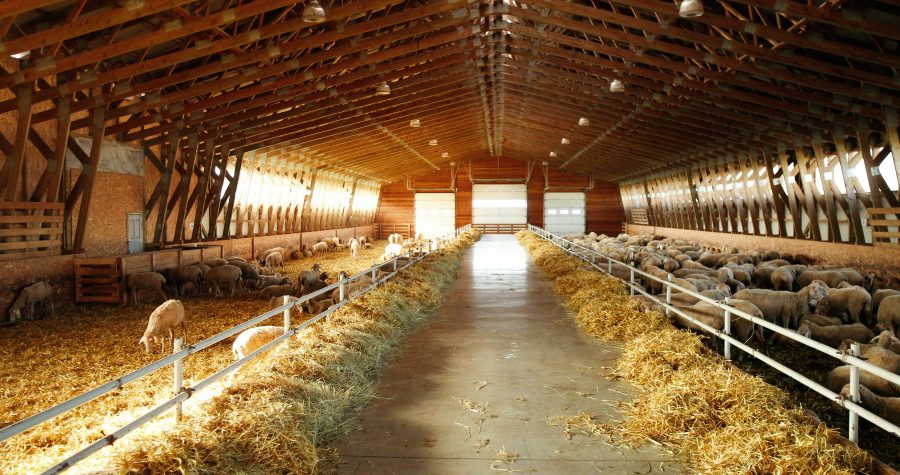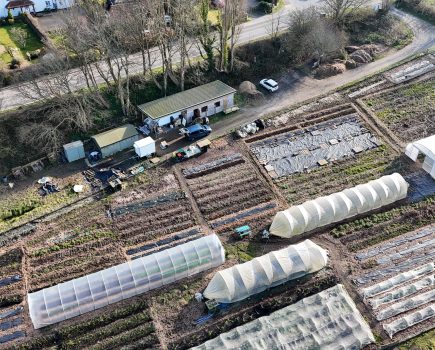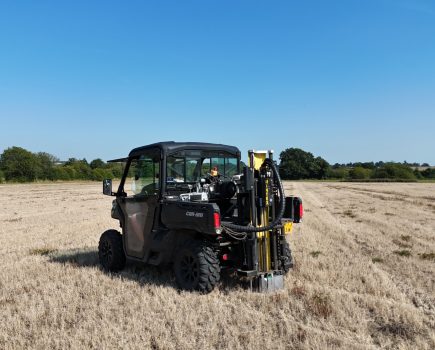Constructing new farm buildings costs money; that much is obvious, but beyond that undeniable fact, there are calculations to be made.
New buildings bring the opportunity for increased productivity, greater efficiency and, of course, a healthier bottom line.
The right new building, constructed expertly by a reliable contractor and designed as part of a carefully thought-out business plan can revolutionise a business and boost profitability considerably.
One of the most important considerations when designing livestock buildings is the amount of space needed to maximise animal welfare. It’s a topic that was covered by Jamie Robertson, Livestock Consultant with the Rural & Industrial Design & Building Association (RIDBA) in the association’s spring journal.
South East Farmer is grateful to RIDBA and to Jamie for permission to quote from his article here:
“The interaction of space and animal welfare has been mentioned before, along with the suggestion that we need to recognise the value of the quality and quantity of space made available to animals.
In the early days of research into animal welfare and the development of animal systems, the defining physical attributes were space (m2) per animal, ambient temperature and not a lot more.
The optimum number of animals in a group (cows can ‘recognise’ up to 60 cohorts, not more) or the height of water troughs and feeders was evaluated (depends on age), and as the science improved the design of animal systems also included factors such as air changes per hour (based on CO2 production) and the design of sleeping areas (lunge space; cubicle design).
Overall, there emerges an understanding that while we can easily define an equitable unit of space per animal, there is considerable value in the quality of that space, but the quality will often come at a cost. So, the question for the system designer is how much increased cost does the client value?
The UK cattle sector is the same as any other business in that it needs to invest to remain sustainable, and once the ear tags, fancy feed additives, power, water and all the other consumables have been paid for, there is a need to invest in buildings.
They represent a major, once-in-a-lifetime cost, but the aim is to bring in value to the business. The build design process needs to start with the number and size of animals to be housed, group size and feed system.
Immediately there will be conflict, because the industry experience is “We can/cannot keep 10/15/20 cattle per bay” and “We have always done it like this” and “We tried one of those and it did/didn’t work”.
It is not logical to make a once-in-a-lifetime series of technical decisions based on a string of opinions. Instead refer to the information provided by BS5502 and the RIDBA Farm Buildings Handbook or AHDB guidance material.
The Dairy Housing: A best practice guide (AHDB, 2012) outlines the space requirements in cubicle housing. The book has been freely available for more than ten years and yet producers and builders will still build cattle housing that does not fit industry guidance or – the usual favourite – only use the guidance information they want.
The aim is to house a certain number of cattle at a cost and not at a value. We know that wider passageways, cubicles, feed and water spaces, cross-over passages and holes in the roof all increase the cost per cow, and we need to sell the value of these increased costs.
The benefits of good design outlined in the AHDB Dairy Housing booklet include:
- Longer lying times
- Better feet condition
- Reduced aggressive behaviours
- Reduced fouling
- Reduced risk of udder damage or disease
- Optimised feed and water intake
- Improved bedding conditions
- Reduced slurry pooling
- Reduced heat and cold stress
In addition to the above, improved fertility with adequate floor space and surface, lighting quality and impact of well-designed ventilation on the incidence and severity of respiratory diseases also apply.
The positive value of the cost of these design features on the lifetime of a building will run into the tens of thousands of pounds.
Provision of a large area building for single animal systems can be attractive as a means of restraining build costs per housed animal. Build costs per unit of space can be reduced as the total build space increases, up to a limit.
Builders need to be aware the engineering limits on a single build space are far higher than animal system limits on space. This has been mentioned previously, whereby an increased number of animals in a single airspace increases the risk of the spread of disease.
The poultry sector and, to a lesser extent the pig sector, manage this by designing buildings that match the throughput of animals to facilitate All IN, ALL OUT (AIAO) management of each room.”
Read our full feature on farm construction







